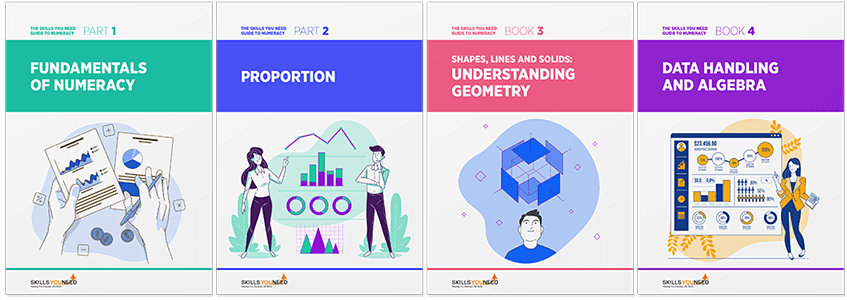Sharpen Your Credit Building Skills in 4 Easy Steps
See Also: Budgeting SkillsWhen was the last time you talked openly about your credit score? If it’s subprime, you may keep your lips tightly sealed. You might pretend it doesn’t exist at all, preferring to stick your head in the sand.
But this strategy has no legs. Sooner or later, you’re going to need to share your credit score and, when you do, it will have a profound impact on your chances of qualifying for loans and credit cards with rates you can afford.
Did this make you feel even worse? Don’t worry — there are ways to improve this score. This primer shows you what credit is and how you can sharpen it to improve your chances of qualifying for your next personal loan.

What is Credit?
To put it simply, credit is your financial report card. It comes with a numerical grade and a broader breakdown of your past performance when handling loans.
Your consumer credit file contains the past borrowing history of all the accounts shared to a credit reporting agency. This may include a student loan, installment loan, mortgage, line of credit, and even that cash advance you took out in an emergency.
Your credit score is a numerical representation of your performance in these accounts. In the U.S. it’s a three-digit number that helps lenders determine your creditworthiness, which is a fancy way of saying you’ll pay them back.
What Does Your Score Mean?
FICO — short for Fair Isaac and Company — is the most popular credit score system in the U.S, accounting for some 90 percent of all lending decisions. Under this system, your score may fall anywhere from 300 to 850.
At the low end of the scale, 300 represents the worst score you can get. It severely hampers your ability to be approved for a traditional bank loan, as it indicates you’ve hit some speedbumps in your financial past.
Bad credit may complicate your ability to get a bank loan, but it doesn’t make it impossible to find cash in an emergency.
There are direct payday lenders that may lend you money, but their loans are only available under specific circumstances. These payday loans offer online loans for unexpected emergency expenses, and their higher rates reflect that, they therefore should be avoided if possible.
On the other end of the scale, 850 is a perfect credit score.
Having a squeaky-clean score simplifies getting a bank loan, as you’ve already shown you handle credit responsibly. Perfect credit unlocks the lowest rates available with most lenders, so you won’t need to contact direct payday lenders if you have it.
While these numbers illustrate the best and worst, most people fall somewhere in the middle of these two extremes. In fact, the average is 714 which, as you can see below, is a good score!
| Rating | Score |
| Excellent | 720–850 |
| Good | 690–719 |
| Fair | 630–689 |
| Bad | 300–629 |
These numbers and corresponding ratings determine two things:
- Whether you will be approved
- And if so, at what rates and terms
How is Your Credit Score Determined?
Five major factors make up a weighted scoring system that grades each factor as a percentage of a final mark worth 100 percent.
1. Payment History (35%)
Your ability to pay back what you owe on time is the biggest factor of your score. People who regularly pay bills late tend to have lower scores as a result.
2. Credit Utilization (30%)
Credit utilization is the percentage of your available credit limit you use. This ratio only affects revolving accounts like a line of credit or credit card.
3. Length of History (15%)
FICO takes into account how long each account has been open. Generally speaking, older accounts boost your score, provided you keep them in good standing.
4. New Credit (10%)
Just as old credit may boost your score, new credit may lower it. Opening several accounts at once lowers the overall average account age.
5. Credit Mix (10%)
Having a variety of loan types in your file shows you’re flexible, provided, once again, that you keep every account in good standing.
4 Steps to Building Better Credit
Although you may have bad credit now, there’s good news — your score is a dynamic number that constantly changes to reflect your borrowing habits.
If you continue making bad decisions, then you probably won’t see a positive effect on this score. But, if you make good decisions, you may see this score slowly climb the ratings.
Now that you know the building blocks of credit, it’s easier to understand how your financial decisions may impact your score.
Here are four things you can do to pack on good credit while you wait for bad entries to expire.
1. Pay Bills on Time
Paying your bills on time, every time is a great first step to building credit, so do your best to avoid late payments on all your financial obligations.
If you’re struggling to pay things on time, don’t panic. First, check in with your budget to see if you can realistically change your spending habits to free up more cash.
Start with easy splurges you can simply cut out, but don’t be afraid to think about what you can do to change your housing, utility, or commuting costs.
Next, set up reminders in your phone so that you receive a notification a few days before each bill is due. This simple trick helps you if you tend to forget about your bills.
Lastly, talk to your creditors if you’re still struggling. They may be willing to set up a financing plan that helps you pay back what you owe.
It’s important to note that while not all lenders will share positive payment history to the credit scoring agencies, many will share delinquencies. This is especially relevant if you’ve taken out a direct payday lender loan. By keeping on top of these bills, you can prevent bad entries from going into your file.
2. Pay More Than Your Minimum Balance
A line of credit or credit card has a minimum payment on each billing statement. It represents the least amount of money you have to pay to keep this revolving account in good standing.
When things are tight, it may be tempting to pay just the minimum, but this small decision may have a profound effect on your credit utilization. By paying a percentage of your bill, you’ll carry over a good chunk of your balance into the next billing statement. This amount is subject to fees and interest.
Generally speaking, you should use no more than 30 percent of your credit at any given time. However, the less you use, the better. People with perfect credit tend to stay under a 10 percent credit utilization.
3. Use a Line of Credit Less Often
Another way to manage your utilization ratio is by simply putting your credit on a shelf. Try not to use it unless it’s absolutely necessary and, when you do, make sure you have the cash on hand to pay back your balance in full. This habit puts a stop to splurging on things you can’t afford.
4. Take a Loan Only in Emergencies
Remember, older histories tend to have a greater positive effect on your credit, provided you keep things in good standing. Each new account will knock off some of that time.
Try to protect your average account age by keeping personal loans as an emergency back up.
What can you use to replace it? Look into creating an emergency fund that can help you tackle surprise expenses on your own, and only ever apply for a new account if there’s no other way to handle an unexpected emergency expense.
Further Reading from Skills You Need
The Skills You Need Guide to Numeracy

This four-part guide takes you through the basics of numeracy from arithmetic to algebra, with stops in between at fractions, decimals, geometry and statistics.
Whether you want to brush up on your basics, or help your children with their learning, this is the book for you.
Bottom Line
High interest rates and other costly fees come as a consequence of bad credit. That means you’re going to pay more every time you need help in an emergency.
Luckily, no score is permanent, so you can take control of your finances by giving your credit some TLC.
Depending on how low your score is when you start, it may be a slow process. But don’t be discouraged. Eventually, all your hard work will pay off. Follow the tips above, and you may see a slow improvement to your score over time.
About the Author
Matt Reed lives in Toronto, Canada. He is a freelance writer and editor, tech geek, and stay at home father.

